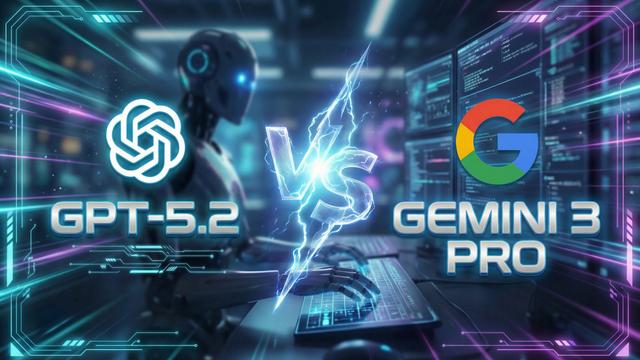What is Gemini Models
The Gemini family includes several models, each optimized for specific use cases: Gemini Ultra is tailored for complex tasks, Gemini Pro offers balanced performance across multiple tasks, Gemini Flash is lightweight and efficient for speed-focused applications, and Gemini Nano is designed for on-device tasks, ensuring accessibility on mobile platforms.
One of the standout features of Gemini Models is their long context window, allowing them to analyze large volumes of data—up to two million tokens for certain models—enhancing their ability to understand and generate coherent outputs. With a focus on ethical AI development, Gemini Models undergo rigorous safety evaluations, ensuring responsible usage across various sectors. As they integrate into Google products, they are set to redefine the AI landscape, offering unprecedented capabilities to developers and users alike.

Features of Gemini Models
Gemini models, developed by Google DeepMind, represent a significant advancement in artificial intelligence, designed to handle diverse data types and complex tasks. These models are optimized for scalability and flexibility, enabling applications across various platforms, from data centers to mobile devices. The Gemini family includes several variants—Ultra, Pro, Flash, and Nano—each tailored for specific use cases, ensuring efficient performance across a range of scenarios.
Key Features of Gemini Models:
- Multimodal Capabilities: Gemini models can process and understand text, images, audio, and video, facilitating seamless interactions across different data types. This allows users to engage with the models through diverse inputs, enhancing their usability for various applications.
- Long Context Window: With the ability to handle up to two million tokens, Gemini models excel in long-context understanding. This feature enables them to process extensive documents, complex code, and large datasets, making them ideal for tasks that require deep contextual comprehension.
- High-Quality Output: Gemini models are designed to generate high-quality responses across multiple tasks, including code generation and reasoning. They have demonstrated state-of-the-art performance on numerous benchmarks, outperforming human experts in various assessments, which underscores their reliability and effectiveness.
- Efficiency and Scalability: Gemini models are built for efficient operation, allowing them to run on diverse hardware configurations without compromising performance. This scalability ensures that they can meet the demands of different users, from developers to enterprise customers.
- Ethical Considerations: Emphasizing responsible AI development, Gemini models undergo comprehensive safety and ethics testing. This includes adversarial testing to identify and mitigate biases, ensuring that the models operate fairly and safely across different applications.
How Gemini Models Work
Gemini models, developed by Google DeepMind, represent a significant leap in artificial intelligence, particularly in their capability to process multimodal data. These models, including Ultra, Pro, Flash, and Nano, are designed to handle and integrate various data types such as text, images, audio, and video seamlessly.
In industry applications, Gemini models can be utilized for a range of tasks including advanced code generation, natural language understanding, and real-time image analysis. For instance, developers can leverage Gemini Pro for generating high-quality code across multiple programming languages, enhancing productivity in software development. The models' long context capabilities allow for the analysis of extensive documents and multimedia content, making them ideal for sectors like education and research.
Moreover, Gemini's natively multimodal features enable it to provide insights from diverse inputs, assisting in creative fields such as marketing and content creation. Businesses can integrate Gemini models into existing platforms, streamlining processes and fostering innovation. With these powerful tools, organizations can harness AI to drive efficiency and unlock new opportunities across various industries.
Benefits of Using Gemini Models
Gemini Models, developed by Google DeepMind, offer a range of advanced features that significantly enhance AI capabilities across various applications. One of the primary benefits is their multimodal functionality, allowing them to seamlessly process and reason with diverse data types, including text, images, audio, and video. This versatility enables developers to create more intuitive and interactive applications.
With an impressive long context window of up to two million tokens, Gemini Models can handle extensive documents and complex tasks without losing context, making them ideal for applications requiring deep comprehension and analysis. Their enhanced reasoning abilities allow for sophisticated problem-solving, whether in coding, scientific research, or natural language understanding.
Additionally, the models are designed for scalability, enabling efficient deployment from cloud environments to mobile devices, ensuring high performance regardless of the platform. This flexibility, combined with a focus on safety and ethical AI practices, makes Gemini Models a robust choice for developers and researchers looking to push the boundaries of what AI can achieve.
Alternatives to Gemini Models
While Gemini Models offer impressive capabilities, several alternatives have emerged in 2024, each with unique strengths:
- GPT-4o by OpenAI excels in multimodal processing and offers improved performance in multiple languages.
- Claude 3.5 Sonnet from Anthropic stands out for its exceptional reasoning and creative content generation.
- Jurassic-1 by AI21 Labs boasts 178 billion parameters, focusing on transforming text composition and comprehension.
- PaLM 2 from Google emphasizes advanced reasoning and responsible AI development.
- Amazon Titan, exclusive to Amazon Bedrock, leverages Amazon's AI expertise for seamless integration with AWS services.
These alternatives provide developers and businesses with a range of options to suit specific needs and preferences in the rapidly evolving AI landscape.
In conclusion, Gemini Models represent a significant advancement in AI technology, offering unparalleled multimodal capabilities, long context understanding, and ethical considerations. As they continue to integrate into various applications and industries, Gemini Models are poised to drive innovation and efficiency across diverse sectors. While alternatives exist, Gemini's comprehensive approach to AI development positions it as a frontrunner in shaping the future of artificial intelligence.











